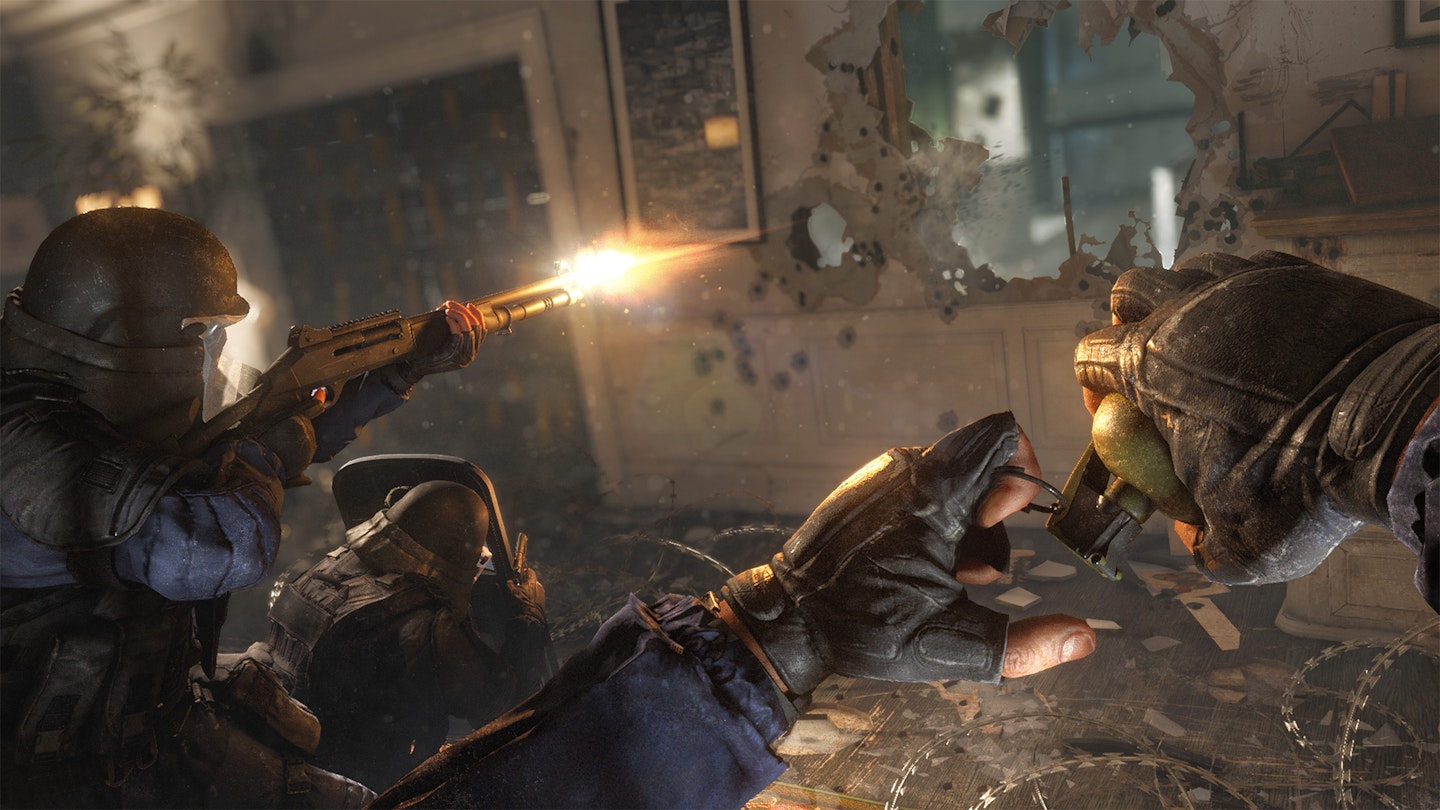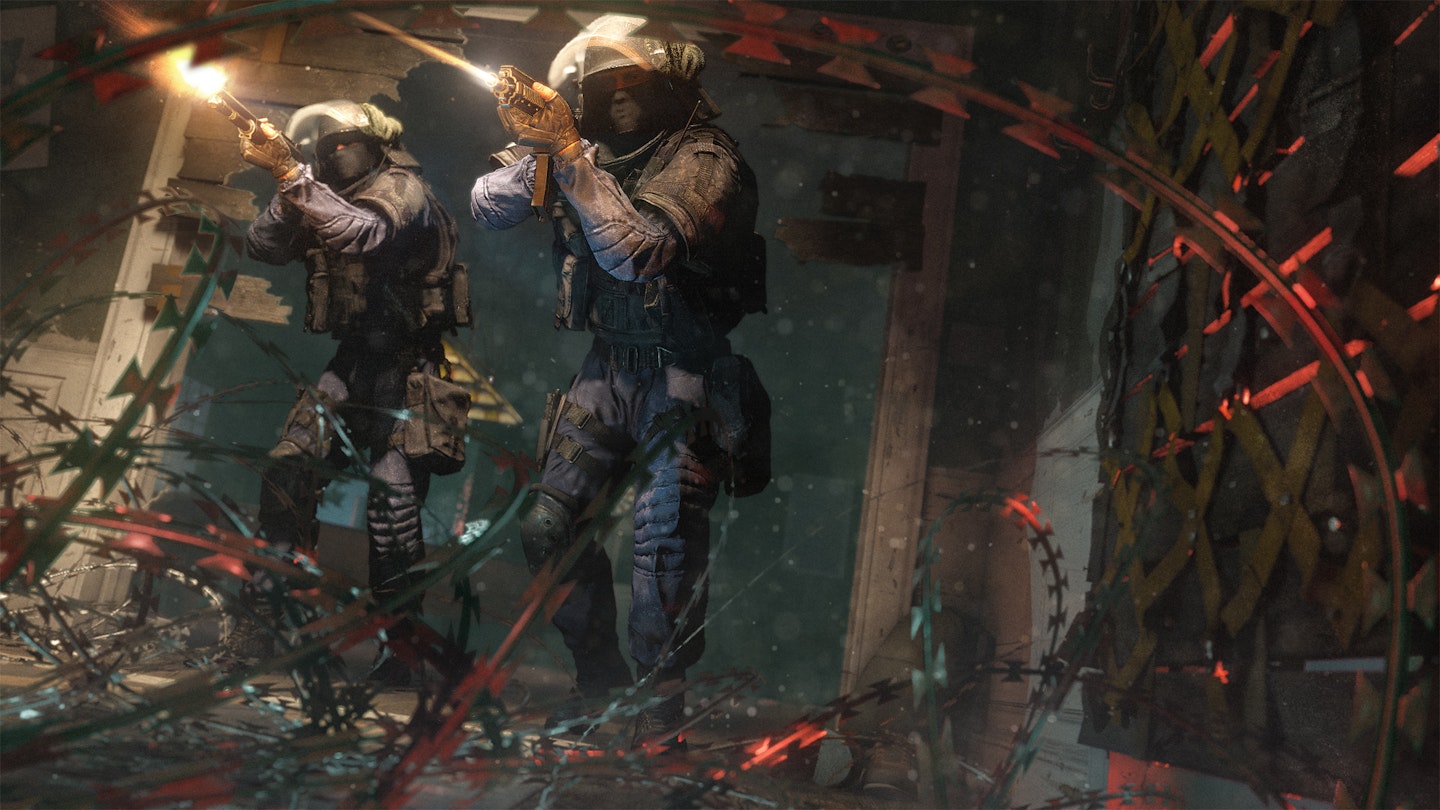Rainbow Six has always been one of those franchises with a cult following, which is just as well since it has been conspicuous by its absence for seven years now. It found favour among those who consider conventional first-person shooters insufficiently rigorous, so its trademark has been a refusal to let players respawn once they die, or even to regenerate health when injured. Those with long memories will be glad to hear that, even though Rainbow Six Siege represents a mild reboot of the franchise, those principles remain intact, so its status as the most realistic mainstream shooter on sale has been preserved.
However, Siege introduces one major change which may prove controversial with the Rainbow Six fan-base. Previous games featured a planning phase prior to each mission, in which you could plot your squad’s path – in minute detail – through a floor-plan of the site you were raiding. That has been removed, in favour of a period in which your squad can drive wheeled, camera-equipped drones through the target area, gleaning information such as the whereabouts of hostages or bombs that must be defused. Given how military technology has moved on in the last seven years – and that we never had the patience for Rainbow Six’s planning phase, anyway – we reckon that is a move which makes sense.
In the modern idiom, Rainbow Six Siege is very much an online game, but it does have a single-player section which acts as an extended tutorial. This consists of ten Situations, in which you take on increasingly lengthy missions on your own – each introduced by Angela Bassett, who plays Six, head of Rainbow, the military outfit which employs you. The Situations introduce you to the concept of Operators, which are the game’s different special forces soldiers, each of whom has a distinctive set of kit. As you complete Situations, you earn Experience Points, known as Renown which, in turn, allow you to unlock Operators from five different elite military organisations, including the SAS and FBI SWAT.
As you start accumulating Operators – and every time you buy a new one from the same military organisation, the price doubles, so it makes sense to try out all the different nationalities – you can begin to sample the game’s online side. The best way to ease yourself into that is via the Terrorist Hunt mode, in which you always play as an attacker forming part of a five-man squad (with human, rather than computer-controlled team-mates), taking on artificial intelligence-powered enemies. This is where the game’s fun really starts, as you have to co-operate with your squad-mates and swiftly build up quite a bond with them. The action progressively becomes more frenetic, but right from the off, it’s strikingly addictive. Rainbow Six Siege is definitely more of a run-and-gun game than its predecessors, but you still have to master pretty esoteric techniques, such as leaning around corners and spotting sight-lines, in order to progress.

By the time you’ve had a good blast on Terrorist Hunt (feeling the need to bump up the difficulty level from Normal to Hard is a good sign that you’ve got your eye in), you should be ready to hit the very core of Rainbow Six Siege: its rather unimaginatively named Multiplayer section. In which you and your five-person squad will take on rival squads, over matches consisting of four rounds (plus a tie-break fifth if you get to 2-2). Each team alternates between attacking and defending, so it’s vital, by this stage, to have unlocked Operators which complement those of your team-mates, and to have found your role in the squad.
Playing against human opposition sees the camaraderie you develop with team-mates reach new heights, and the game’s action attain a frenetic new pitch. The gadgets on offer for both attackers and defenders are great. The former can, for example, pick Operators who can plant a static machine-gun behind a shield, or cover entire walls with impenetrable reinforced metal shielding; while it is always handy to have one attacker equipped with a shield, for when you need to enter a restricted area, such as a corridor, under heavy fire. Defenders might have to guard a hostage (and if attackers kill that hostage, they lose the round), while attackers might have to defuse a bomb with a defuser which has to be carried around.
Rainbow Six Siege’s multiplayer is one of the most addictive slices of gameplay we’ve experienced this year. It’s fast and tense – often, the last remaining team member can rescue a round when all appears lost – and it’s surely destined to forge a legendary reputation among the first-person shooter end of the e-sports fraternity.
If you had to criticise Rainbow Six Siege, you would argue that it could do with a few more gameplay modes, particularly in its multiplayer. However, overall it feels much more like a full, coherent game than Star Wars Battlefront (which is basically a jumble of disparate elements), although admittedly it doesn’t look anywhere near as spectacular. Then again, nothing else does.
Ubisoft has made a pretty good fist of updating Rainbow Six for modern tastes. Siege is different – noticeably more action-oriented – but still sufficiently rigorous that it could only be a Rainbow Six game. And it is amazingly addictive: once you start playing it, time just melts away. Even die-hard Rainbow Six fans who used to while away hours planning missions will surely be unable to resist its charms once they have given it a good go.
